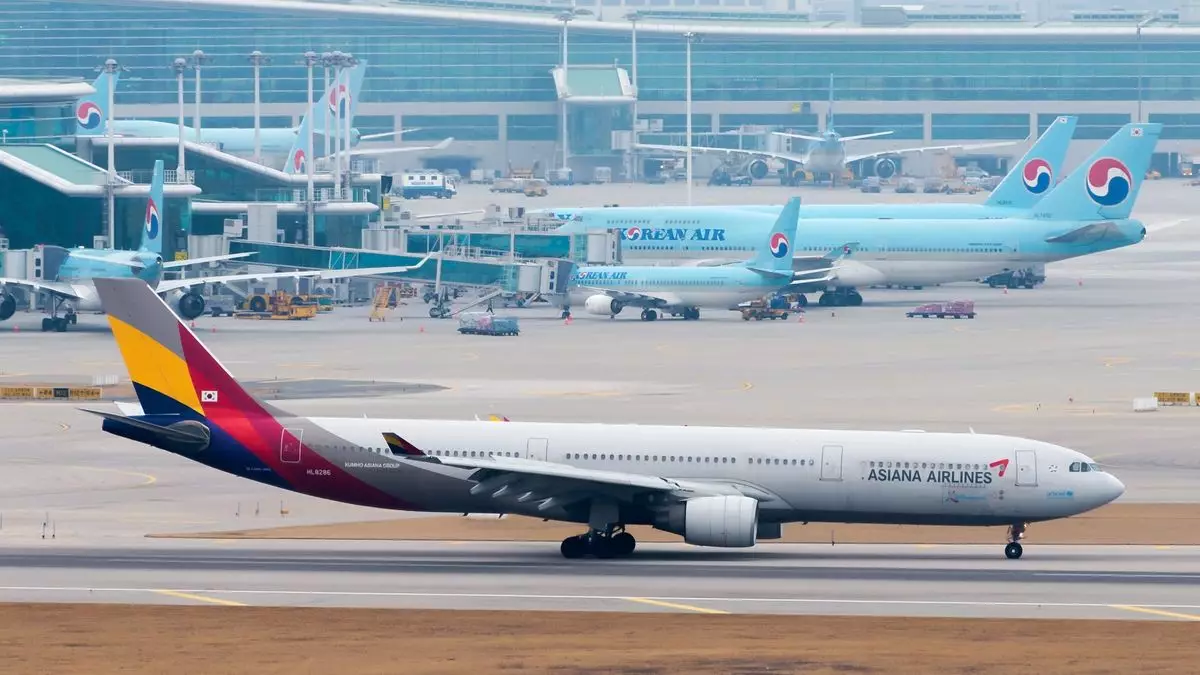Korean Air has officially finalized its acquisition of Asiana Airlines, a significant move that reshapes the South Korean aviation landscape. The deal, valued at $1.3 billion, grants Korean Air a 64% ownership stake in Asiana, marking the culmination of a merger agreement that was established amidst the challenges posed by the Covid-19 pandemic four years prior. This acquisition does not merely consolidate the two airlines but also propels Korean Air into a prominent global standing, ranking it as the 11th largest airline in the world based on international weekly seating capacity, a remarkable leap from its previous position at 22nd.
The strategic significance of this merger goes beyond mere numbers; it grants Korean Air Group a substantial 47% share of the South Korean international aviation market. This percentage encompasses the fleets of Korean Air and Asiana, in addition to their low-cost subsidiaries: Jin Air, Air Busan, and Air Seoul. The implications for market control and competition are profound. Notably, the plan indicates that Air Busan and Air Seoul will now operate under the Jin Air brand, streamlining operations and resources in what is likely an effort to enhance efficiency and market presence.
Korean Air’s pathway to completing this merger involved navigating a complex regulatory landscape. The approval from the European Commission was a landmark moment, providing a green light just two weeks before the acquisition was concluded. While Japanese and Chinese authorities also cleared the merger, the U.S. Department of Justice remains a lingering concern. However, Korean Air’s decision to proceed suggests confidence in eventual approval, bolstered by strategic concessions made during the regulatory process. One such concession includes leasing four Boeing 787 aircraft to Air Premia, a budding competitor on the South Korea-U.S. route, fostering a more competitive environment.
As the integration of the two airlines unfolds over the next two years, it remains essential to monitor how the individual brand identities of Korean Air and Asiana will evolve. Despite the overarching consolidation, Asiana maintains its brand autonomy for the time being, which could influence consumer perception and loyalty. Korean Air has the dual challenge of ensuring operational efficiencies while retaining the unique offerings that Asiana customers expect.
The merger of Korean Air and Asiana Airlines signifies a pivotal moment in the global airline industry. As markets recover from the pandemic, this alliance not only enhances their competitive stance but also reshapes travel dynamics for consumers. The successful integration of these two airlines could pave the way for future alliances and set a precedent for emerging markets in the aviation sphere. With the mutual benefits of expanded routes, increased efficiencies, and shared resources, this acquisition marks the beginning of a transformative chapter for South Korean aviation and could potentially influence broader trends in the global airline market.

